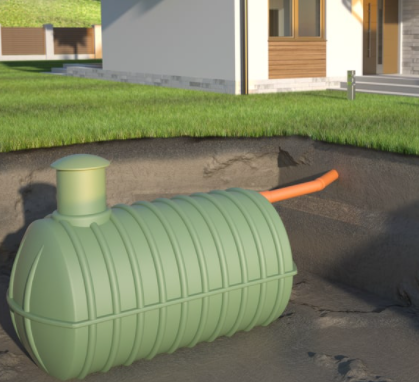 From the Home, Distance
From the Home, Distance Consult local codes and regulations for a particular response as to how far your septic tank must be mounted from your building. Requirements vary from one region to another, but 10 feet is the normal minimum distance from the building. However, if you are planning to use a private pool for drinking water, remember that many state health departments need a minimum of 50 feet between a new septic tank and a well.
At the same time as digging the footings for the building, contractors also dig for the septic tank and system. In some situations, since it's simpler and needs less piping, they can position the septic tank far closer to the structure. However, you, the homeowner, will eventually be liable for the tank location, so closely watch the situation while your home is being built.
Considerations of basic protection
There are some big precautions you can take on this project if you're a guy who likes to do stuff yourself. Check with the local utility firms for the positioning of service lines before digging the hole for the tank. Not only is it unsafe to isolate a gas line, water line, telephone line or electrical cable, but rectification can also be very costly.
Exercise caution until you finish digging the pit. Particularly in sandy or loose soil, the walls of the hole can cave in, which can cause injury or death. Bear in mind that a concrete septic tank will weigh up to 5 tons as well. Don't try on your own to maneuver a concrete unit into the hole. When the tank is shipped, have the hole ready and have it put directly in place.
Tips to Install Successfully
Make plans until you get your septic tank mounted and get your water supply switched on. The explanation for this is that, as soon as it is in operation, you need to fill the tank with water. This does not have anything to do with the septic system itself, but it is a wise step toward safety.
A resulting swell in the groundwater could cause an empty septic tank to float out of the ground if sudden rain occurs, even if it has been buried. It can be costly and time consuming to bring the tank back in position and fix any harm done to the lines or to the tank itself.








 From heating and cooling to electronics and appliances, it takes a lot of energy to power our daily lives. Our homes use 37 percent more energy today than they did in 1980. But without energy efficiency -- through technology innovation and federal energy conservation standards -- this number would be a lot higher. In fact, even though our total energy use has grown, our energy use per household is down about 10 percent, despite that our homes are larger and contain more devices.
From heating and cooling to electronics and appliances, it takes a lot of energy to power our daily lives. Our homes use 37 percent more energy today than they did in 1980. But without energy efficiency -- through technology innovation and federal energy conservation standards -- this number would be a lot higher. In fact, even though our total energy use has grown, our energy use per household is down about 10 percent, despite that our homes are larger and contain more devices.



